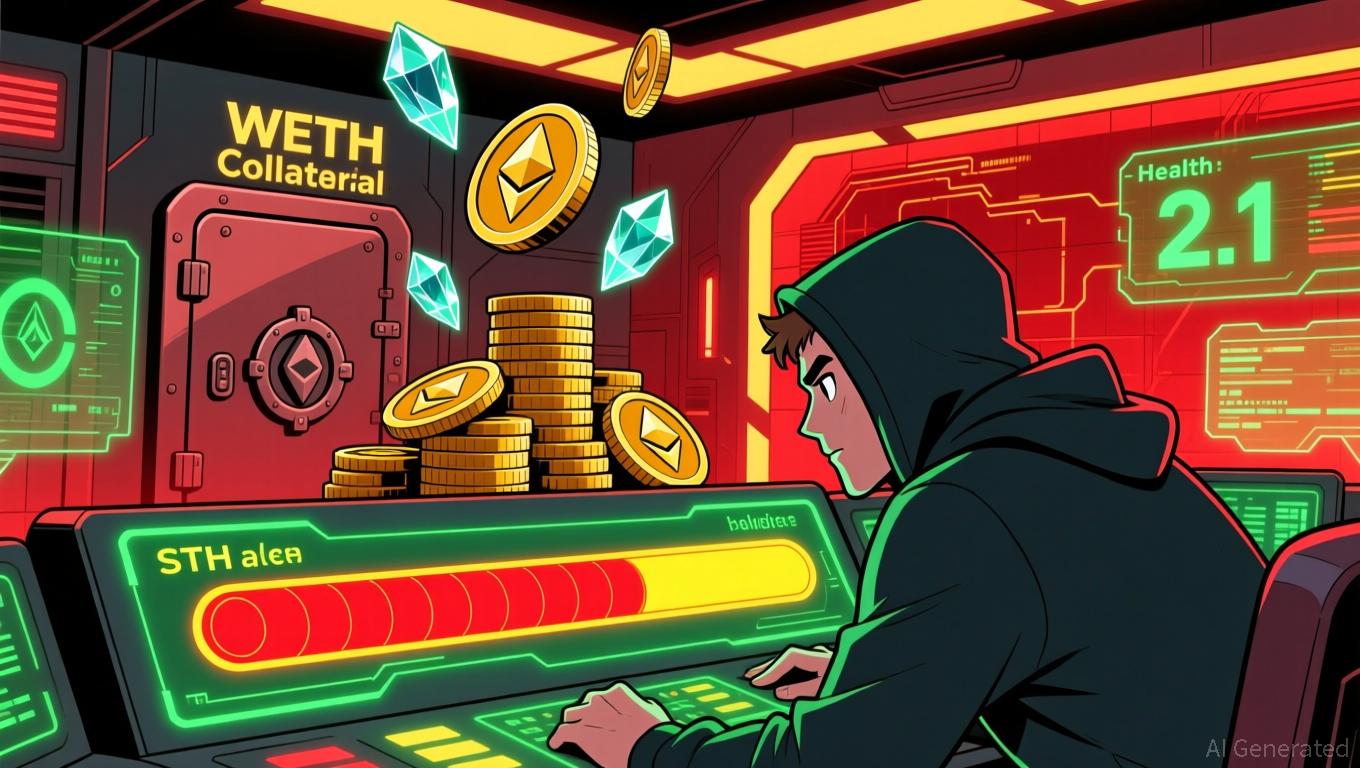Hyperliquid News Today: The Future of DeFi—Wallets That Operate Automatically Even When You're Asleep
- DeFi's growth demands smarter wallets to automate risk management amid volatile markets. - Hyperion-Felix and Bitget HyperEVM integrations expand DeFi's reach but highlight automation gaps. - Current wallets lack TradFi-like safeguards, risking losses during sudden price swings. - Embedded automations are crucial for DeFi's mainstream adoption, aligning with evolving regulatory and tech trends.
The fast-paced development of DeFi is transforming the financial landscape, yet a significant challenge persists: the absence of intelligent, automated wallets to shield users from market volatility. As decentralized finance (DeFi) protocols broaden their scope—from perpetual futures to cross-chain liquidity—investors are increasingly exposed to sudden price changes and the need for hands-on management. Partnerships such as the
Hyperion DeFi’s alliance with Felix, revealed in October 2025, is a prime example of DeFi’s ongoing innovation. Through a HYPE Asset Use Service (HAUS) contract, Hyperion provided Felix with 500,000 HYPE tokens to establish a perpetual futures market utilizing Hyperliquid’s HIP-3 protocol. This move not only broadens Hyperliquid’s offerings but also brings in fee income for those staking HYPE with Hyperion, as detailed in Stocktitan’s report. Felix, which surpassed $1 billion in total value locked (TVL) in September 2025, intends to incorporate this system into its Felix Exchange, marking a move toward more institutional-grade DeFi services.

At the same time, Bitget Wallet’s adoption of HyperEVM is designed to streamline cross-chain operations, making it easier for everyday users to get started. The update enables smooth asset transfers through deBridge and offers gas-fee rebates in $HYPE, positioning Bitget as a gateway between DeFi’s complexity and broader user adoption. Likewise, Ethena’s Terminal Finance, a spot decentralized exchange (DEX), exceeded $280 million in pre-deposit TVL before its official debut, reflecting strong interest in platforms that trade yield-generating stablecoins like
However, despite these advancements, the DeFi user experience remains disjointed. Most wallets still function as “passive vaults,” requiring users to manually approve trades, rebalance portfolios, and manage risks. This approach proved disastrous during the 2022 Terra UST crash, when holders of stablecoins in self-custody wallets suffered overnight losses of up to 30% due to the absence of automated protections, as reported in a
The difference with traditional finance (TradFi) is clear. TradFi platforms incorporate automation—such as stop-loss orders and scheduled rebalancing—to shield portfolios from market shocks. The lack of these tools in DeFi forces users to remain constantly alert, hindering widespread adoption. Huang believes that DeFi’s next phase must focus on “built-in automations” to make wallets inherently smart and secure, echoing concerns from the Cointelegraph article.
Regulatory and technological changes are converging to close this gap. The U.S. GENIUS Act, which allows banks to hold stablecoins, is connecting TradFi and DeFi, while an
To move forward, wallets must transition from passive storage to active management partners. Capabilities like automatic rebalancing, liquidation safeguards, and rule-based trading—standard in TradFi—need to be brought into DeFi’s self-custody environment. As DeFi nears $10 billion in safer yield protocols, a
Without automation, DeFi risks repeating its early mistakes—high entry barriers and user fatigue. As Huang puts it, “If autopilot can drive your car, your wallet should manage your investments.” The next chapter for DeFi depends on wallets that operate efficiently, even while users are asleep.
Disclaimer: The content of this article solely reflects the author's opinion and does not represent the platform in any capacity. This article is not intended to serve as a reference for making investment decisions.
You may also like
Zcash (ZEC) Experiences Price Rally in Late 2025: Privacy-Focused Cryptocurrencies Return as Macro Safe-Haven Choices
- Zcash (ZEC) surged 750% in late 2025, outperforming Bitcoin and Ethereum amid growing demand for privacy-focused crypto assets. - Network upgrades by Electric Coin Company enhanced privacy via ephemeral addresses and zk-SNARKs, while Japan's crypto-friendly regulations boosted institutional adoption. - Institutional interest in Zcash's shielded transactions and low correlation with traditional crypto assets positions it as a strategic hedge against surveillance and volatility. - Regulatory clarity in Jap

Ethereum News Update: Major Ethereum Holders Invest $1.37B During Market Dip, Indicating Potential Rise to $10K
- Ethereum whales spent $1.37B buying 394,682 ETH during November 2025's 12% price drop, signaling strong bullish conviction. - Aave whale leveraged $270M loans to acquire 257,543 ETH ($896M), using a high-leverage borrowing-swapping cycle to expand holdings. - Institutional buyers like Bitmine Immersion added $139.6M ETH, joining coordinated accumulation as exchange reserves hit 2016 lows. - Market fundamentals show negative MVRV readings and $3,400 ETH stabilization, with analysts projecting $4,800–$10,0

UAE Executes Its Inaugural Digital Dirham Transaction: A Key Step Toward Shaping the Worldwide Digital Economy
- UAE executed first government transaction using Digital Dirham CBDC via mBridge platform in under two minutes. - The pilot involved Dubai Finance and Ministry of Finance, demonstrating blockchain-driven efficiency in public sector payments. - mBridge collaboration includes BIS, CBUAE, and regional partners, with Saudi Arabia joining in 2024 to expand cross-border capabilities. - UAE leaders called the initiative a "strategic pillar" for digital economy growth, aligning with global financial modernization

Visa’s Stablecoin Express Lane: Seamless, Real-Time Global Payments for Freelancers
- Visa launches stablecoin pilot for instant global payouts to gig workers, bypassing traditional banking infrastructure. - Program uses USD-backed stablecoins to address currency volatility and limited banking access in underbanked regions. - Initiative aligns with blockchain integration strategy, supported by regulatory clarity from the GENIUS Act and Visa's tokenized asset platform. - Pilot complements Visa's legal settlement negotiations with merchants and positions the company to maintain leadership i
